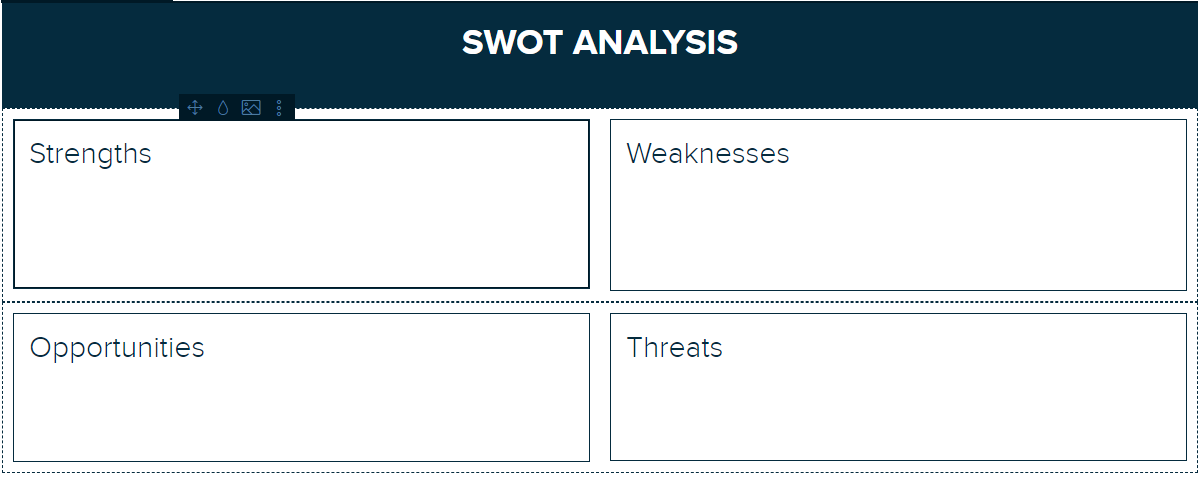Do you ever feel like you’re at a loss where you want your life to go? When was the last time you did some personal contemplation? Here’s something you can do – and it is, in fact, one thing we learn from business classes: the SWOT Analysis.
Businesses and organizations use the SWOT Analysis to examine the past, evaluate the present, and plan for the future. The SWOT Analysis template is simple. It only requires you to list down things into four categories: Strengths, Weaknesses, Opportunities, and Threats. It gives key leaders a fresh look at what the business is good at, the current challenges, and possible solutions for the betterment of the entire education.
Now, a Personal SWOT Analysis requires a similar approach. You simply take the time to assess yourself creatively. Career-wise, it will help you form an intelligent decision on what to do next on your journey.
When Should You Create A Personal SWOT Analysis?
- Before you apply for a promotion. – Compare yourself against possible candidates also vying for the job. This analysis will help you highlight your strengths and align them to the requirements of the job.
- Before a session with your mentor. – In your career, it is always helpful to have a mentor guiding you on your journey. Now, before you set a talk, SWOT analysis results can help you have a more fruitful discussion.
- Before you interview for a new opportunity. – Your self-assessment can help you improve the creation of your CV. By taking the time to look into your performance, you’ll also find yourself more prepared to answer interview questions.
- Before you change careers. – When you’re at a crossroads between your current industry and a career you are passionate about, your personal assessment will help you see which one you are actually more suitable and meant to be.
- Anytime is a good time! – Life should be lived with continuous improvement in mind. Never stop learning and never stop growing! So, anytime you feel the need to be a better version of yourself, start with a SWOT Analysis and use it as a guide for your journey to a new you.
How Should You Write Your Personal SWOT Analysis?
Okay, you want to do this. But how to start? Though there are many forms of a SWOT Analysis, its simplest and purest form requires you to divide your paper or document into four quadrants for each category.

- Strengths – Start with listing down your most vital traits. In this part, there’s no space to feel modest. As a guide, you can ask yourself these questions:
- What qualifications make you stand out in terms of education, training, skills, and certifications?
- What awards and recognition are you most proud of?
- What characteristics would set you apart against your peers?
- How would your colleagues and superiors describe you? What do you think they like most about you?
- What expertise do you have that will bring value to your organization?
- Weaknesses – Next, it is time to identify your weakness. Once you list them down, you’ll be able to strategize improving them.
- What are your bad habits?
- What is lacking in your training and education?
- What tasks do you feel the least comfortable and confident doing?
- What would your superiors and colleagues say to be your weakness?
- Opportunities – Look around you and see the doors opening up to help you become better.
- Do you see a training option that will bring you to a great advantage?
- Is there a new program or project in your company that will help you step up the career ladder?
- Is a position opening up soon in your company?
- How is your current industry? Is there new technology coming up that will change the game?
- Threats – Now, look at what can hinder you from achieving your dreams.
a. Who is your competition?
b. Are there changes that threaten your company’s place in its industry?
c. Will new technology eliminate the need for your expertise?
d. What are your traits and problems that limit your success?
Make The Most Of Your SWOT Analysis
Once your SWOT analysis is complete, it is now time to follow through on your journey to improve. You can make use of the SWOT analysis findings to create a TOWS matrix. A TOWS matrix will allow you to match the best and worst parts of yourself to crucial external factors. Now, you will form a guided strategy for your personal development, especially your career.


